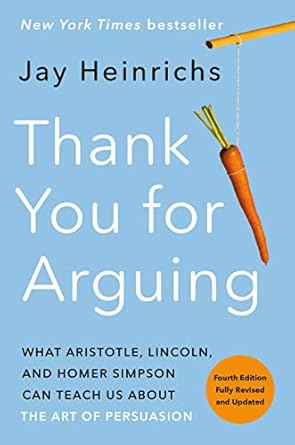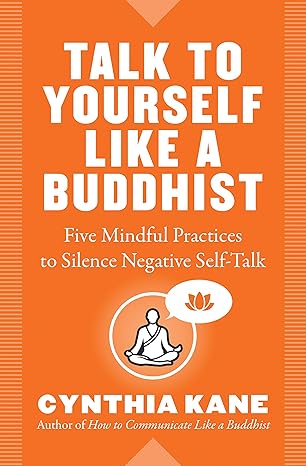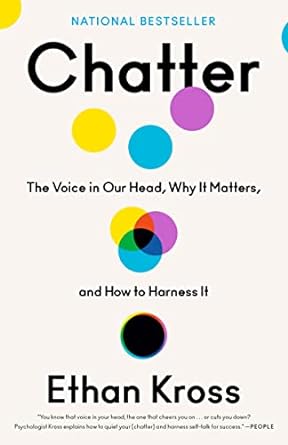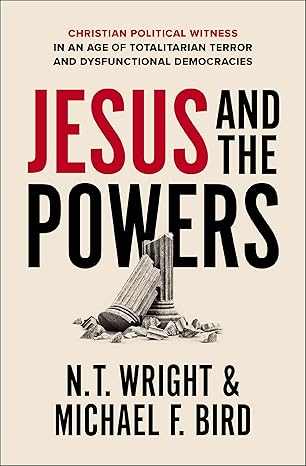
Zen in the Art of Archery
A classic work on Eastern philosophy, ‘Zen in the Art of Archery’ is a charming and deeply illuminating story of one man’s experience with Zen. Eugen Herrigel, a German professor of Philosophy in Tokyo, took up the study of archery as a step toward an understanding of Zen Buddhism. This book is the account of the six years he spent as a student of one of Japan’s great kyudo (archery) masters, and of how he gradually overcame his initial inhibitions and began to feel his way toward new truths and ways of seeing.
BEST DEALS
About the Author
Eugen Herrigel was a German philosopher who taught philosophy at Tohoku Imperial University in Sendai, Japan, from 1924 to 1929 and introduced Zen to large parts of Europe through his writings. He was a member of the Militant League for German Culture and was committed to Nazi beliefs until he died.
Read Sample
Chapter 1
At first sight it must seem intolerably degrading for Zen however the reader may understand this word – to be associated with anything so mundane as archery. Even if he were willing to make a big concession, and to find archery distinguished as an ‘art’, he would scarcely feel inclined to look behind this art for anything more than a decidedly sporting form of prowess. He therefore expects to be told something about the amazing feats of Japanese trick-artists, who have the advantage of being able to rely on a time − honoured and unbroken tradition in the use of bow and arrow. For in the Far East it is only a few generations since the old means of combat were replaced by modern weapons, and familiarity in the handling of them by no means fell into disuse, but went on propagating itself, and has since been cultivated in ever widening circles. Might one not expect, therefore, a description of the special ways in which archery is pursued today as a national sport in Japan?
Nothing could be more mistaken than this expectation.
By archery in the traditional sense, which he esteems as an art and honours as a national heritage, the Japanese does not understand a sport but, strange as this may sound at first, a religious ritual. And consequently, by the “art” of archery he does not mean the ability of the sportsman, which can be controlled, more or less, by bodily exercises, but an ability whose origin is to be sought in spiritual exercises and whose aim consists in hitting a spiritual goal, so that fundamentally the marksman aims at himself and may even succeed in hitting himself.
This sounds puzzling, no doubt. What, the reader will say, are we to believe that archery, once practiced for the contest of life and death, has not survived even as a sport, but has been degraded to a spiritual exercise? Of what use, then, are the bow and arrow and target? Does not this deny the manly old art and honest meaning of archery, and set up in its place something nebulous, if not positively fantastic?
It must, however, be borne in mind that the peculiar spirit of this art, far from having to be in fused back into the use of bow and arrow in recent times, was always essentially bound up with them, and has emerged all the more forthrightly and convincingly now that it no longer has to prove itself in bloody contests. It is not true to say that the traditional technique of archery, since it is no longer of importance in fighting, has turned into a pleasant pastime and thereby been rendered innocuous. The “Great Doctrine” of archery tells us something very different. According to it, archery is still a matter of life and death to the extent that it is a contest of the archer with himself; and this kind of contest is not a paltry substitute, but the foundation of all contests outwardly directed – for instance with a bodily opponent. In this contest of the archer with himself is revealed the secret essence of this art, and instruction in it does not suppress anything essential by waiving the utilitarian ends to which the practice of knightly contests was put.
Anyone who subscribes to this art today, therefore, will gain from its historical development the undeniable advantage of not being tempted to obscure his understanding of the “Great Doctrine” by practical aims – even though he hides them from himself – and to make it perhaps altogether impossible. For access to the art and the master archers of all times are agreed in this – is only granted to those who are “pure” in heart, untroubled by subsidiary aims.
Should one ask, from this standpoint, how the Japanese Masters understand this contest of the archer with himself, and how they describe it, their answer would sound enigmatic in the extreme. For them the contest consists in the archer aiming at himself – and yet not at himself, in hitting himself – and yet not himself, and thus becoming simultaneously the aimer and the aim, the hitter and the hit. Or, to use some expressions which are nearest the heart of the Masters, it is necessary for the archer to become, in spite of himself, an unmoved centre. Then comes the supreme and ultimate miracle: art becomes “artless,” shooting becomes not-shooting, a shooting without bow and arrow; the teacher becomes a pupil again, the Master a beginner, the end a beginning, and the beginning perfection.
For Orientals these mysterious formulae are clear and familiar truths, but for us they are completely bewildering. We have therefore to go into this question more deeply. For some considerable time it has been no secret, even to us Europeans, that the Japanese arts go back for their inner form to a common root, namely Buddhism. This is as true of the art of archery as of ink painting, of the art of the theatre no less than the tea ceremony, the art of flower arrangement, and swordsmanship. All of them presuppose a spiritual attitude and each cultivates it in its own way – an attitude which, in its most exalted form, is characteristic of Buddhism and determines the nature of the priestly type of man. I do not mean Buddhism in the ordinary sense, nor am I concerned here with the decidedly speculative form of Buddhism, which, because of its allegedly accessible literature, is the only one we know in Europe and even claim to understand. I mean Dhyana Buddhism, which is known in Japan as “Zen” and is not speculation at all but immediate experience of what, as the bottomless ground of Being, cannot be apprehended by intellectual means, and cannot be conceived or interpreted even after the most unequivocal and incontestable experiences: one knows it by not knowing it. For the sake of those crucial experiences Zen Buddhism has struck out on paths which, through methodical immersion in oneself, lead to one’s becoming aware, in the deepest ground of the soul, of the unnamable Groundlessness and Qualitylessness – nay more, to one’s becoming one with it. And this, with respect to archery and expressed in very tentative and on that account possibly misleading language, means that the spiritual exercises, thanks to which alone the technique of archery becomes an art and, if all goes well, perfects itself as the “artless art,” are mystical exercises, and accordingly archery can in no circumstances mean accomplishing anything outwardly with bow and arrow, but only inwardly, with oneself. Bow and arrow are only a pretext for something that could just as well happen without them, only the way to a goal, not the goal itself, only helps for the last decisive leap. In view of all this, nothing would be more desirable than that one should be able to lay hands on expositions by Zen Buddhists as an aid to understanding. These are in fact not lacking. In his Essays In Zen Buddhism, D. T. Suzuki has succeeded in showing that Japanese culture and Zen are intimately connected and that Japanese art, the spiritual attitude of the Samurai, the Japanese way of life, the moral, aesthetic and to a certain extent even the intellectual life of the Japanese owe their peculiarities to this background of Zen and cannot be properly understood by anybody not acquainted with it.
The exceedingly important work of Suzuki and the researches of other Japanese scholars have aroused widespread interest. It is generally admitted that Dhyana Buddhism, which was born in India and, after undergoing profound changes, reached full development in China, to be finally adopted by Japan, where it is cultivated as a living tradition to this day, has disclosed unsuspected ways of existence which it is of the utmost importance for us to understand.
Despite all the efforts of Zen experts, however, the insight afforded to us Europeans into the essence of Zen has remained exceedingly scanty. As though it resisted deeper penetration, after a few steps one’s groping intuition comes up against insurmountable barriers. Wrapped in impenetrable darkness, Zen must seem the strangest riddle which the spiritual life of the East has ever devised: insoluble and yet irresistibly attractive. The reason for this painful feeling of inaccessibility lies, to some extent, in the style of exposition that has hitherto been adopted for Zen. No reasonable person would expect a Zen adept to do more than hint at the experiences which have liberated and changed him, or to attempt to describe the unimaginable and ineffable “Truth” by which he now lives. In this respect Zen is akin to pure introspective mysticism. Unless we enter into mystic experiences by direct participation, we remain outside, turn and twist as we may. This law, which all genuine mysticism obeys, allows of no exceptions. It is no contradiction that there exists a plethora of Zen texts regarded as sacred. They have the peculiarity of disclosing their life-giving meaning only to those who have shown themselves worthy of the crucial experiences and who can therefore extract from these texts confirmation of what they themselves already possess and are independently of them. To the inexperienced, on the other hand, they remain not only dumb – how could he ever be in a position to read between the lines? – but will infallibly lead him into the most hopeless spiritual confusion, even if he approaches them with wariness and selfless devotion. Like all mysticism, Zen can only be understood by one who is himself a mystic and is therefore not tempted to gain by underhand methods what the mystical experience withholds from him.
Yet the man who is transformed by Zen, and who has passed through the “fire of truth,” leads far too convincing a life for it to be overlooked. So it is not asking too much if, driven by a feeling of spiritual affinity, and desirous of finding a way to the nameless power which can work such miracles – for the merely curious have no right to demand anything – we expect the Zen adept at least to describe the way that leads to the goal.
No mystic and no student of Zen is, at first step, the man he can become through self-perfection. How much has still to be conquered and left behind before he finally lights upon the truth! How often is he tormented on the way by the desolate feeling that he is attempting the impossible! And yet this impossible will one day have become possible and even self-evident.
Is there not room for the hope, then, that a careful description of this long and difficult road will allow us at least one thing: to ask whether we wish to travel it?
Such descriptions of the way and its stations are almost entirely lacking in Zen literature. This is partly due to the fact that the Zen adept has an insuperable objection to giving any kind of instructions for the happy life. He knows from personal experience that nobody can stay the course without conscientious guidance from a skilled teacher and without the help of a Master. No less decisive, on the other hand, is the fact that his experiences, his conquests and spiritual transformations, so long as they still remain “his,” must be conquered and transformed again and again until everything “his” is annihilated. Only in this way can he attain a basis for experiences which, as the “all-embracing Truth” rouse him to a life that is no longer his everyday, personal life. He lives, but what lives is no longer himself.
From this standpoint we can understand why the Zen adept shuns all talk of himself and his progress. Not because he thinks it immodest to talk, but because he regards it as a betrayal of Zen. Even to make up his mind to say anything about Zen itself costs him grave heart-searching’s. He has before him the warning example of one of the greatest Masters, who, on being asked what Zen was, maintained an unmoving silence, as though he had not heard the question. How then could any adept feel tempted to render an account of what he has thrown away and no longer misses?
In these circumstances, I should be shirking my responsibilities if I confined myself to a string of paradoxes and took refuge behind a barrage of high-sounding words. For it was my intention to throw light on the nature of Zen as it affects one of the arts upon which it has set its stamp. This light is certainly not illumination in the sense fundamental to Zen, but at least shows that there must be something behind the impenetrable walls of mist, and which, like summer lightning, heralds the distant storm. So understood, the art of archery is rather like a preparatory school for Zen, for it enables the beginner to gain a clearer view, through the works of his own hands, of events which are not in themselves intelligible. Objectively speaking, it would be entirely possible to make one’s way to Zen from any one of the arts I have named.
However, I think I can achieve my aim most effectively by describing the course which a pupil of the art of archery has to complete. To be more precise, I shall try to summarize the six-year course of instruction I received from one of the greatest Masters of this art during my stay in Japan. So it is my own experiences which authorize me in this undertaking. In order to make myself intelligible at all – for even this preparatory school holds riddles enough – I have no alternative but to recollect in detail all the resistances I had to overcome, all the inhibitions I had to fight down, before I succeeded in penetrating into the spirit of the Great Doctrine. I speak about myself only because I see no other way of reaching the goal I have set before me.
For the same reason I shall confine my account to essentials, so as to make them stand out more clearly. I consciously refrain from describing the setting in which the instruction took place, from conjuring up scenes that have fixed themselves in my memory, and above all from sketching a picture of the Master – however tempting all this may be. Everything must hinge on the art of archery, which, I sometimes feel, is even more difficult to expound than to learn; and the exposition must be carried to the point where we begin to discern those far-off horizons behind which Zen lives and breathes.
Chapter 2
Why I took up Zen, and for this purpose set out to learn the art of archery, needs some explanation. Even as a student I had, as though driven by a secret urge, been preoccupied with mysticism, despite the mood of the times, which had little use for such interests. For all my exertions, however, I became increasingly aware that I could only approach these esoteric writings from the outside; and though I knew how to circle around what one may call the primordial mystic phenomenon, I was unable to leap over the line which surrounded the mystery like a high wall. Nor could I find exactly what I sought in the extensive literature of mysticism, and, disappointed and discouraged, I gradually came to realize that only the truly detached can understand what is meant by “detachment,” and that only the contemplative, who is completely empty and rid of the self, is ready to “become one” with the “transcendent Deity.” I had realized, therefore, that there is and can be no other way to mysticism than the way of personal experience and suffering, and that, if this premise is lacking, all talk about it is so much empty chatter. But – how does one become a mystic? How attain the state of real, and not just imaginary, detachment? Is there still a way to it even for those who are separated by the abyss of the centuries from the great Masters? For the modern man, who has grown up under totally different conditions? Nowhere did I find anything approaching satisfactory answers to my questions, even though I was told about the stages and stations of a way that promised to lead to the goal. To tread this way, I lacked the precise methodical in structions which might substitute for a Master, at least for part of the journey. But would such instructions, even if there were any, suffice? Is it not more probable that, at best, they only create a readiness to receive something which even the best method cannot provide, and that the mystical experience therefore cannot be induced by any disposition known to man? However I looked at it, I found myself confronted by locked doors, and yet I could not refrain from constantly rattling at the handles. But the longing persisted, and, when it grew weary, the longing for this longing.
When, therefore, I was asked – I had in the meantime become a lecturer at a university whether I would like to teach philosophy at the University of Tokyo, I welcomed this opportunity of getting to know the country and people of Japan with especial joy, if only because it held out the prospect of my making contact with Buddhism and hence with an introspective practice of mysticism. For this much I had already heard, that there was in Japan a carefully guarded and living tradition of Zen, an art of instruction that had been tested over the centuries, and, most important of all, teachers of Zen astonishingly well versed in the art of spiritual guidance.
Scarcely had I begun to find my way about in the new milieu when I set out to realize my desire. I at once met with embarrassed refusals. Never yet, I was told, had any European seriously concerned himself with Zen, and since Zen repudiated the least trace of “teaching,” it was not to be expected that it would satisfy me “theoretically.” It cost me many wasted hours before I succeeded in making them understand why I wished to devote myself specifically to the non-speculative form of Zen. Thereupon I was informed that it was quite hopeless for a European to attempt to penetrate into this realm of spiritual life – perhaps the strangest which the Far East has to offer – unless he began by learning one of the Japanese arts associated with Zen.
The thought of having to go through a kind of preparatory schooling did not deter me. I felt ready to go to any length if only there were some hope of my getting a bit nearer to Zen; and a roundabout way, however wearisome, seemed better to me than no way at all. But to which of the arts named for this purpose should I subscribe? My wife, after a little hesitation, decided for flower arrangement and painting, while the art of archery seemed more suitable for me, on the – as it later turned out – completely erroneous assumption that my experiences in rifle and pistol shooting would be to my advantage.
I begged one of my colleagues, Sozo Komachiya, a professor of jurisprudence who had been taking lessons in archery for twenty years and who was rightly regarded as the best exponent of this art at the university, to enter my name as a pupil with his former teacher, the celebrated Master Kenzo Awa.
The Master at first refused my request, saying that he had once been misguided enough to instruct a foreigner and had regretted the experience ever since. He was not prepared to make concessions a second time, in order to spare the pupil the burden of the peculiar spirit of this art. Only when I protested that a Master who took his job so seriously could well treat me as his youngest pupil, seeing that I wished to learn this art not for pleasure but for the sake of the “Great Doctrine,” did he accept me as his pupil, together with my wife, since it has long been customary in Japan for girls to be instructed in this art, and since the Master’s wife and two daughters were diligent practitioners.
And so began the long and strenuous course of instruction, in which our friend Mr. Komachiya, who pleaded our cause so obstinately and almost stood guarantor for us, participated as interpreter. At the same time my good fortune in being invited to attend my wife’s lessons in flower arrangement and painting held out the prospect of my winning a still broader basis of understanding through constant comparison of these mutually complementary arts.












